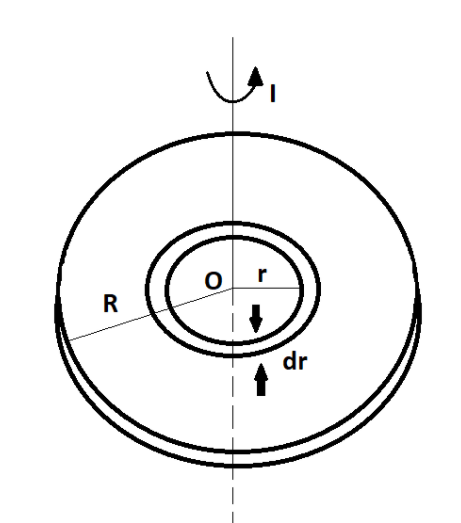Question
Question: A thin circular plate of mass M and radius R has its density varying as \[\rho (r) = {\rho _0}r\] wi...
A thin circular plate of mass M and radius R has its density varying as ρ(r)=ρ0r with ρ0 as constant and r is the distance from its centre. The moment of inertia of the circular plate about an axis perpendicular to the plate and passing through its edge is I=aMR2. the value of the coefficient a is:
A. 23
B. 21.
C. 53.
D. 58.
Solution
In this question, we will use the concept of moment of inertia of a body. We should know that the moment of inertia of a rigid body around a fixed axis is defined as the sum of the products of the masses of the particles that make up the body and the squares of their respective distances from the rotation axis, i.e. I=m1r12+m2r22+m3r32+........
I=i=1∑nmiri2.
Formula used: ρ=areamass, area of circle = 2πrdr, I=ICM+MR2.
Complete step-by-step answer:

Given that, M is the mass and R is the radius of the plate, varying density as ρ(r)=ρ0r where ρ0 as constant and r is the distance from its centre.
Taking a circular ring of radius r and thickness dr as a mass element, then
Area of circular ring = 2πrdr.
We know that, density = ρ=areamass.
Then, mass = ρ×area. …………………….……..(i)
So for total mass, we will integrate equation (i) with limit 0 to R, we get
⇒M=0∫Rρ0r×2πrdr ⇒M=[3r3]0R×2πρ0 ⇒M=32πρ0R3………………….(ii)
Let ICMbe the moment of inertia of the body about the axis parallel to the perpendicular axis,
We know that, ICM=total mass×r2, then
ICM=0∫Rρ0r×2πrdr×r2, we get
ICM=52πρ0R5.
Now, using the parallel axis theorem, we know that
